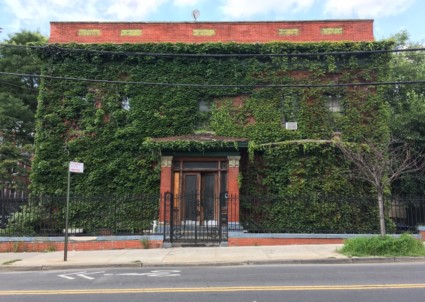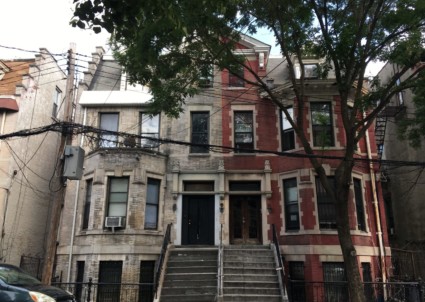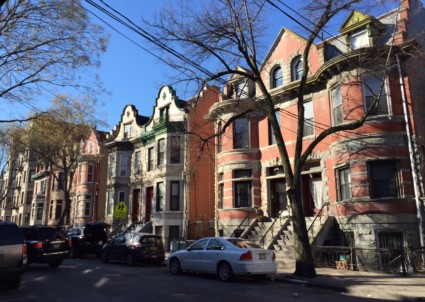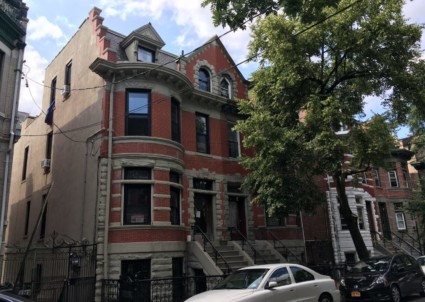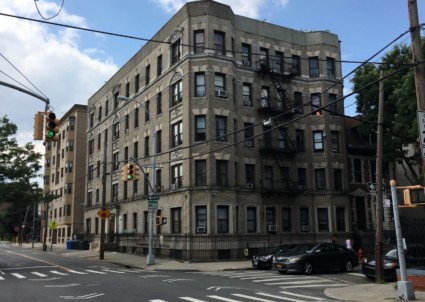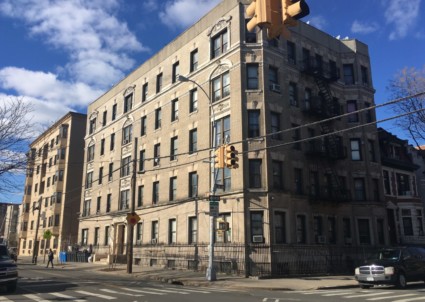Clay Avenue Historic District
New York City Historic District, National Register Historic District
The Clay Avenue Historic District encompasses one block from East 165th and East 166th Streets, and is made up of charming, low-rise and mostly intact buildings that date from the early 20th century. In 1900, seeing a chance to earn a profit through speculative development, Ernest Wenigmann began amassing property on Clay Avenue in The Bronx, in some instances directly purchasing it from descendants of the Morris family that held title to the land since 1670. Intending to construct 28 houses on the block, Wenigmann commissioned Warren C. Dickerson, a reputable architect who designed many high quality rowhouses in The Bronx at the turn-of-the-century. Dickerson employed a transitional style, combining Renaissance-inspired massing and detailing with popular Romanesque Revival motifs, such as rock-faced stonework. Although all of the houses are faced with beige or red brick, Dickerson counterbalanced variations in ornamentation with the repetition of building forms to create a dynamic streetscape. Other details emerge upon further inspection: for instance, all of the houses on the west side of the street have single wooden doors, while the east side homes feature wood and glass double doors.
Dickerson, who was also responsible for a majority of the buildings in the Longwood and Morris High School Historic Districts, designed each detached pair to house four families, though each resembles a pair of single-family homes. At the turn of the 20th century, these two-family houses had become popular in Brooklyn and The Bronx, and were viewed as “the best possible investment for the young married man.” The aspirational middle-class homeowner could fit their family into one apartment while renting out the adjacent unit for additional income, all while maintaining the appearance of occupying an entire single-family home. On Clay Avenue, Ernest Wenigmann began selling his houses in 1902, and three years later the street was almost entirely occupied. The 1905 New York State census indicates that Clay Avenue was a predominantly middle-class street of owners and renters, with all residents identifying as white and most listed as American-born.

